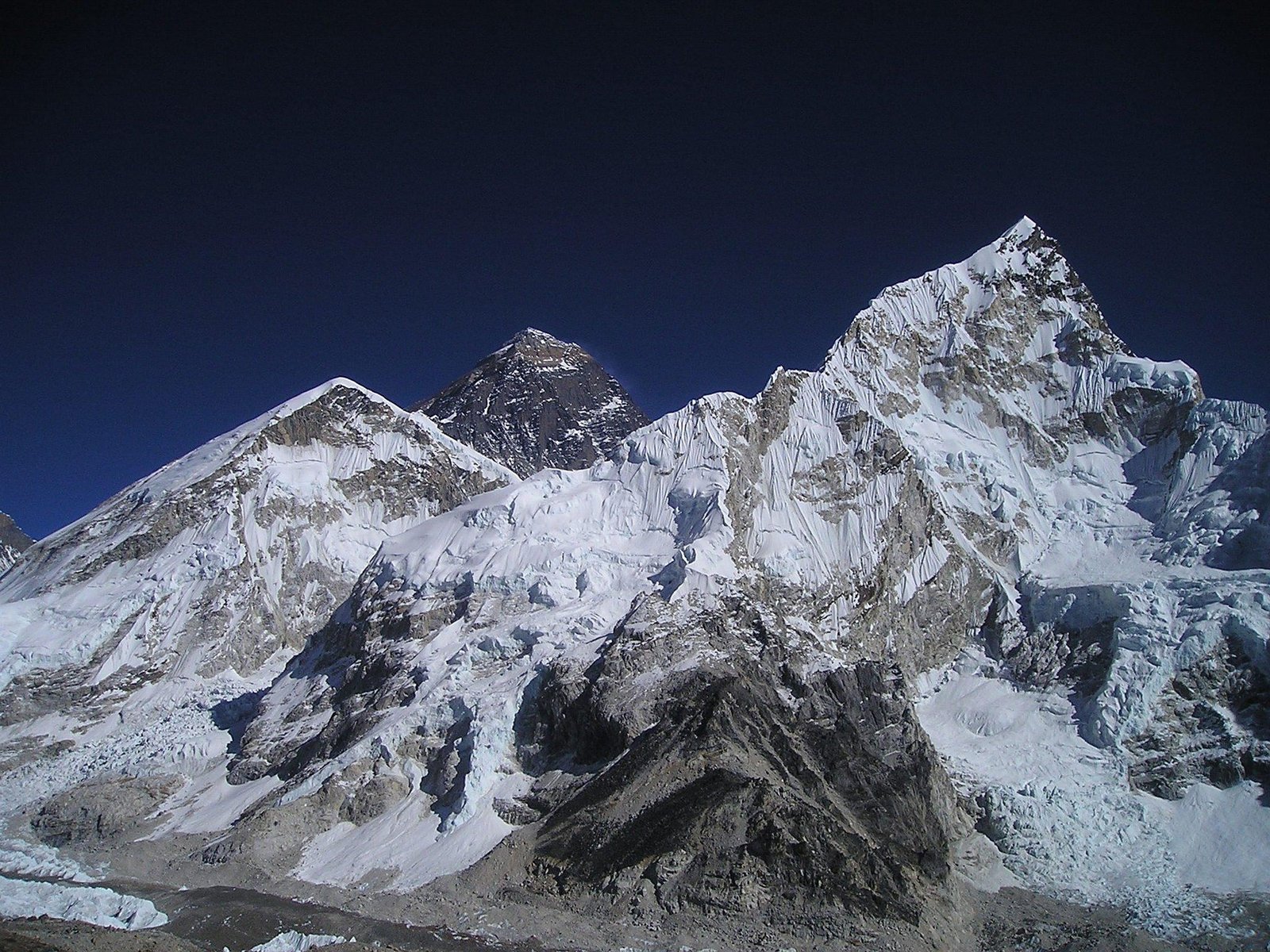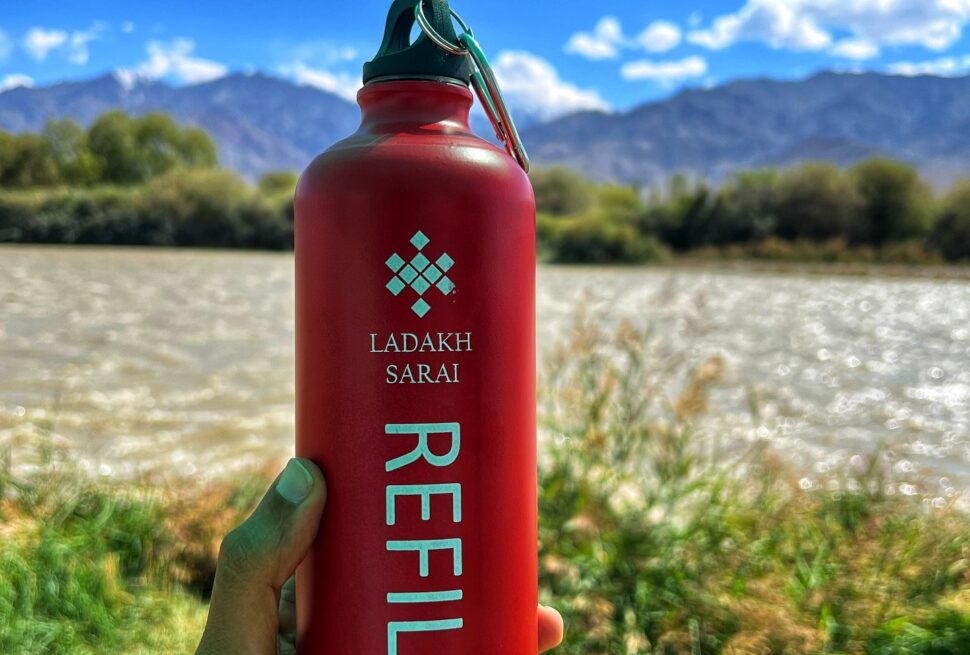Cradled between the Karakoram and Zanskar ranges, Ladakh is often called the “Land of High Passes” — and for good reason. This rugged Himalayan frontier is stitched together by a network of dramatic mountain passes (“La” in Ladakhi), each one a gateway to hidden valleys, sacred lakes, and ancient trade routes that once connected India to Central Asia.
From the legendary Khardung-La, once considered the highest motorable road in the world, to the windswept heights of Chang-La, Tanglang-La, and the record-breaking Umling-La, these passes are more than just roads — they are rites of passage for adventurers, bikers, and spiritual seekers alike. Each summit offers not only jaw-dropping panoramas but also a glimpse into Ladakh’s resilient spirit, where fluttering prayer flags and remote army outposts stand as symbols of endurance and faith.
Whether you’re crossing into Nubra Valley, heading toward the sapphire waters of Pangong Tso, or tracing the ancient Silk Route, Ladakh’s high passes promise a journey that’s as thrilling as it is transformative.
Would you like a shorter teaser version for a homepage banner or a visual prompt to pair with this section? I can also help you format the full list of passes into a downloadable PDF or interactive map.
Khardung La Pass – Gateway to the Nubra Valley and the Roof of Adventure
Perched at a staggering 5,359 meters (17,582 feet) above sea level, Khardung La is one of the world’s highest motorable mountain passes — a legendary milestone for bikers, explorers, and high-altitude dreamers. Located just 40 km from Leh, this iconic pass connects the Indus Valley to the remote Nubra and Shyok Valleys, and serves as a vital route to the Siachen Glacier, the world’s highest battlefield.
Originally part of the ancient Silk Route, Khardung La is more than just a road — it’s a rite of passage. As you ascend its winding, rugged trails, the air thins and the landscape transforms into a surreal canvas of snow-dusted peaks, fluttering prayer flags, and panoramic views that stretch beyond imagination.
At the summit, travelers are greeted by a signboard declaring their conquest, a small army-run café serving hot tea, and a sense of triumph that only the Himalayas can offer. Whether you’re on a motorbike expedition, a Jeep safari, or a spiritual journey, Khardung La is a place where adrenaline meets awe.
Baralacha La Pass – Where Three Ranges and Two Rivers Meet
Straddling the rugged spine of the Zanskar range at an altitude of 4,890 meters (16,040 feet), Baralacha La Pass is a dramatic high-mountain crossing on the Leh–Manali Highway, linking Lahaul in Himachal Pradesh with Ladakh. Known as the “pass with crossroads on the summit,” Baralacha La is where the Pir Panjal, Zanskar, and Great Himalayan ranges converge — a rare geographical tri-junction that makes this pass both scenic and significant.
The pass is also a hydrological marvel, serving as the origin point of the Chandra and Bhaga rivers, which later unite to form the mighty Chenab. Nearby lies the ethereal Suraj Tal, one of India’s highest lakes, shimmering like a sapphire beneath snow-draped peaks.
Baralacha La is open only from June to October, when the snow recedes to reveal a surreal landscape of glacial streams, jagged ridgelines, and wind-sculpted plains. It’s a favorite among bikers, trekkers, and road trippers, offering a raw, untamed beauty that few places on Earth can match.
Whether you’re crossing it en route to Sarchu, pausing for photos at Zingzing Bar, or simply soaking in the silence, Baralacha La is more than a pass — it’s a threshold to the wild heart of the Himalayas
Chang La Pass
Rising to a breathtaking 5,360 meters (17,586 feet), Chang La Pass is one of the world’s highest motorable roads — a windswept Himalayan corridor that links Leh to the shimmering expanse of Pangong Tso. Known as the “Pass towards the South”, Chang La is more than a route — it’s a rite of passage for adventurers, bikers, and spiritual seekers alike.
The journey to Chang La winds through stark valleys, frozen streams, and prayer-flag-draped switchbacks. At the summit, travelers are greeted by the Changla Baba Temple, dedicated to a revered local sage, and a humble army-run tea stall offering warmth in the thin, icy air. The pass is guarded and maintained by the Indian Army due to its strategic proximity to the Indo-China border, adding a layer of reverence and resilience to the experience.
Despite its beauty, Chang La demands respect — the air is thin, the weather unpredictable, and visitors are advised to limit their stay at the top to 15–20 minutes to avoid altitude sickness. But for those who brave its heights, the reward is unforgettable: panoramic views of the Changthang Plateau, glimpses of wild marmots, and the thrill of standing on one of the planet’s loftiest roads.
Fotu La Pass – The Highest Point on the Srinagar–Leh Highway
Towering at an altitude of 4,108 meters (13,478 feet), Fotu La Pass is the highest point on the Srinagar–Leh Highway (NH1) — a windswept gateway nestled in the Zanskar Range of the Himalayas. Located between Kargil and Leh, this scenic mountain pass offers a breathtaking transition from the rugged moonscapes of Lamayuru to the high-altitude plateaus of central Ladakh.
Unlike the more dramatic climbs of Khardung La or Chang La, Fotu La’s approach is gentler, making it a favorite among road trippers and bikers seeking panoramic views without the extreme gradients. The summit is marked by fluttering prayer flags, a Prasar Bharati relay station, and sweeping vistas of jagged ridgelines and deep-cut valleys — a perfect photo stop on your trans-Himalayan journey.
Fotu La is not just a geographical marvel — it’s a lifeline, connecting remote communities and serving as a vital artery for trade, tourism, and military logistics. Open for most of the year (weather permitting), it’s best visited between May and October, when the skies are clear and the road conditions ideal.
Tanglang La Pass – A Windswept Gateway to Ladakh’s Wild Heart
Soaring to an altitude of 5,328 meters (17,480 feet), Tanglang La Pass is one of the highest motorable mountain passes in the world — a dramatic milestone on the legendary Leh–Manali Highway. Nestled between the More Plains and the village of Rumtse, this high-altitude corridor offers a surreal blend of lunar landscapes, snow-draped ridges, and panoramic Himalayan vistas that leave travelers breathless — both literally and figuratively.
Often referred to as the “last great climb” before reaching Leh from Manali, Tanglang La is a favorite among bikers, overlanders, and thrill-seekers, who brave its thin air, sharp switchbacks, and bone-chilling winds for the sheer joy of conquering one of the Himalayas’ most iconic routes. The summit is marked by fluttering prayer flags, a weathered signboard, and a silence so profound it feels sacred.
Despite its rugged beauty, Tanglang La is not for the faint-hearted — altitude sickness is a real risk, and the weather can shift from sunshine to snow in minutes. But for those who make the climb, the reward is unforgettable: a sense of triumph, a view that stretches across the Changthang Plateau, and the knowledge that you’ve touched the sky.
Namika La Pass – The Pillar of the Sky on the Srinagar–Leh Highway
Rising to an altitude of 3,700 meters (12,139 feet), Namika La Pass — meaning “Pillar of the Sky” — is one of the three high-altitude gateways on the legendary Srinagar–Leh Highway (NH1), nestled between Kargil and Lamayuru. Flanked by the stark beauty of the Zanskar Range, this pass offers a gentler ascent compared to its loftier siblings, yet rewards travelers with sweeping views of barren ridgelines, serpentine roads, and the surreal silence of Ladakh’s high desert.
Namika La is more than just a scenic stop — it’s a historic artery of the ancient Silk Route and a vital link in modern-day Ladakh’s lifeline. The road here is well-paved and relatively smooth, making it a favorite among road trippers, bikers, and photographers seeking that perfect Himalayan panorama. On clear days, the pass offers glimpses of distant snow-capped peaks and the dramatic transition from lush valleys to lunar landscapes.
Whether you’re pausing for a photo, catching your breath in the thin air, or simply soaking in the solitude, Namika La is a quiet triumph — a place where the sky feels just a little closer.
Zoji La Pass – The Wild Gateway Between Kashmir and Ladakh
Perched at an altitude of 3,528 meters (11,575 feet), Zoji La Pass is a dramatic mountain corridor that connects the lush Kashmir Valley with the stark, high-altitude deserts of Ladakh. Located on the Srinagar–Leh Highway (NH1), this narrow, winding pass is not just a road — it’s a lifeline, a battlefield, and a bucket-list adventure all rolled into one.
Often called the “Mountain Pass of Blizzards,” Zoji La is infamous for its steep gradients, hairpin bends, and unpredictable weather. It’s a favorite among bikers, overlanders, and thrill-seekers, offering jaw-dropping views of snow-capped peaks, deep valleys, and the surreal transition from green meadows to barren moonscapes.
Historically, Zoji La played a pivotal role during the Indo-Pak War of 1947–48, where Indian forces reclaimed the pass in a daring high-altitude tank assault — a feat etched into military history. Today, it remains a strategic artery maintained by the Border Roads Organization, and a seasonal gateway that opens Ladakh to the rest of India from May to October
Whether you’re crossing into Ladakh from Sonamarg, pausing to photograph the fluttering prayer flags, or simply soaking in the thrill of one of the world’s most treacherous roads, Zoji La is a rite of passage — raw, rugged, and unforgettable
Lorem ipsum dolor sit amet, consectetur adipiscing elit. Ut elit tellus, luctus nec ullamcorper mattis, pulvinar dapibus leo.
Lachung La Pass – A Wind-Swept Gateway on the Leh–Manali Highway
Perched at an altitude of 5,059 meters (16,600 feet), Lachung La Pass — also known as Lungalacha La — is a high-altitude marvel nestled along the iconic Leh–Manali Highway, between Pang and Sarchu. Often overlooked in favor of its more famous siblings, this pass is a hidden gem for road trippers, bikers, and solitude seekers craving raw Himalayan drama.
The approach to Lachung La is a journey through barren moonscapes, wind-carved ridges, and vast open valleys where the silence is broken only by the whistle of icy winds. The road itself is a mix of paved stretches and gravel patches, with steep ascents that test both machine and spirit. But the reward? A summit adorned with fluttering prayer flags, panoramic views of the Zanskar range, and a sense of being suspended between earth and sky.
Lachung La is also a hydrological divide, with glacial meltwaters feeding into the Tsarap Chu and Yunam rivers. It’s a place where geography, mythology, and adventure converge — a must-stop for those tracing the spine of the Himalayas.
Umling La Pass – Conquer the Highest Motorable Road on Earth
At a staggering 5,798 meters (19,024 feet) above sea level, Umling La Pass holds the crown as the highest motorable road in the world — a feat of engineering carved into the windswept wilderness of eastern Ladakh, near the Indo-China border. Built by the Border Roads Organisation (BRO) under Project Himank, this pass connects the remote villages of Chisumle and Demchok, and stands as a symbol of both strategic resilience and high-altitude adventure.
Unlike the more frequented Khardung La or Chang La, Umling La is raw, remote, and extreme. Oxygen levels drop to nearly 50%, temperatures can plunge below –30°C, and the terrain demands unwavering focus. But for those who dare, the reward is unmatched: panoramic views of the Changthang Plateau, surreal silence, and the thrill of standing atop the world.
For seasoned bikers, overlanders, and thrill-seekers, Umling La isn’t just a destination — it’s a badge of honor, a place where the sky feels within reach and every breath is a triumph.
Wari La Pass – Ladakh’s Untamed Backdoor to Nubra
Tucked away in the rugged folds of the eastern Ladakh Himalayas, Wari La Pass rises to a formidable 5,312 meters (17,427 feet) — making it one of the highest motorable passes in the world. Often overshadowed by the more popular Khardung La, Wari La is a hidden gem that connects Leh to Nubra Valley via Sakti and Agham, offering a quieter, more adventurous alternative to the standard route.
The journey to Wari La is not for the faint-hearted. Expect steep gradients, gravel tracks, and remote switchbacks that test both driver and machine. But for those who brave it, the rewards are immense: panoramic views of snow-capped peaks, wild marmots darting across the road, and a sense of solitude that’s rare even in Ladakh. The pass is also a strategic route for the Indian Army, offering faster access to the eastern fringes of Nubra.
At the summit, you’ll find fluttering prayer flags, crisp mountain air, and a silence so profound it feels sacred. Due to its extreme altitude, travelers are advised to limit their time at the top to 15–20 minutes and ensure proper acclimatization before attempting the ascent.
Pensi La Pass – Gateway to Zanskar’s Frozen Majesty
At an altitude of 4,400 meters (14,436 feet), Pensi La Pass is a breathtaking high-mountain corridor that connects the lush Suru Valley with the remote, mystical expanse of Zanskar Valley in Ladakh. Often hailed as the “Gateway to Zanskar”, this pass is more than a route — it’s a dramatic threshold between two worlds: one green and pastoral, the other stark and glacial.
The journey to Pensi La is a visual symphony of alpine meadows, twisting roads, and snow-draped ridgelines. But the true showstopper is the view of the Drang Drung Glacier, Ladakh’s largest glacier outside the Karakoram range — a sprawling river of ice that gleams beneath the sun like a frozen dragon in slumber. Nearby, the twin lakes Stat Tso and Lang Tso mirror the sky, offering a surreal pause for travelers and photographers alike.
Open from May to October, Pensi La is a seasonal lifeline for locals and a dreamscape for adventurers. Whether you’re en route to Padum, trekking through the Zanskar wilderness, or simply chasing Himalayan grandeur, this pass delivers solitude, scale, and soul in equal measure.
Marsimik La Pass – Touching the Sky in Ladakh’s Wild Frontier
At a jaw-dropping 5,582 meters (18,314 feet), Marsimik La Pass is one of the highest motorable passes in the world, tucked deep within the Chang Chenmo Range of eastern Ladakh. Located just 30–35 km northeast of Pangong Lake, this remote and rugged pass offers a rare glimpse into Ladakh’s untamed high-altitude wilderness — a place where few travelers venture, but those who do are rewarded with raw beauty, silence, and sky-piercing solitude.
Once a restricted military zone near the Indo-China border, Marsimik La has recently opened to civilian travelers (with proper permits), offering a thrilling off-road adventure through gravel-strewn switchbacks, shifting sands, and thin mountain air. The route from Phobrang village to the summit is not for the faint-hearted — it demands a 4×4 vehicle, excellent acclimatization, and a deep respect for the altitude.
At the top, you’ll find fluttering prayer flags, sweeping views of the Changthang Plateau, and a sense of triumph that few places on Earth can match. With oxygen levels at nearly 50% of sea level, even a few minutes at the summit feels like a spiritual achievement.
Rezang La Pass – Where Valor Meets the Void
Tucked deep in the Chushul sector of eastern Ladakh, Rezang La Pass rises to an altitude of over 5,000 meters (16,400+ feet) — a stark, windswept corridor that’s as spiritually stirring as it is historically significant. While it may not be as frequented as Khardung La or Chang La, Rezang La holds a place of immortal honor in India’s military history.
On 18 November 1962, during the Sino-Indian War, this pass became the site of one of the most heroic last stands ever recorded. A company of just 120 Indian soldiers from the 13 Kumaon Regiment, led by Major Shaitan Singh, defended this high-altitude outpost against a massive Chinese assault. Despite being vastly outnumbered and cut off from artillery support, they fought to the last man — 114 soldiers laid down their lives, earning eternal reverence and posthumous honors, including the Param Vir Chakra for Major Singh.
Today, the Rezang La War Memorial near Chushul village stands as a solemn tribute to their sacrifice. Surrounded by snow-capped peaks and silence, it’s a place where patriotism echoes louder than the wind. The route to Rezang La — via Chang La and Tangtse — is remote and rugged, requiring Inner Line Permits and proper


